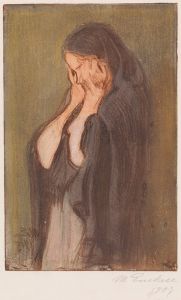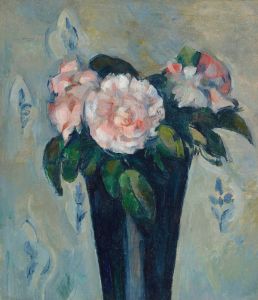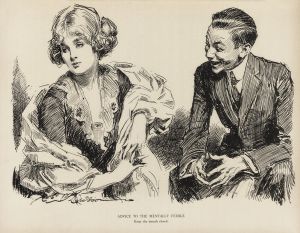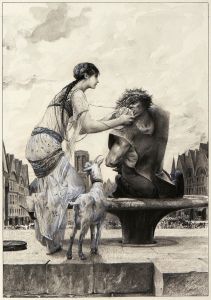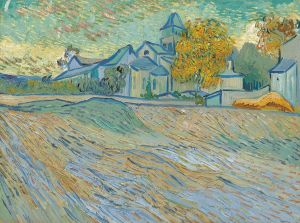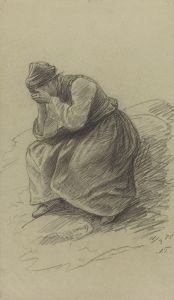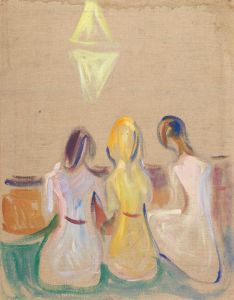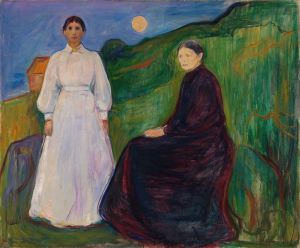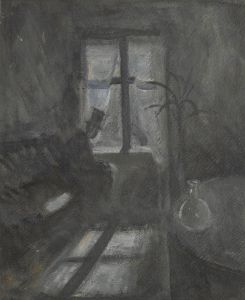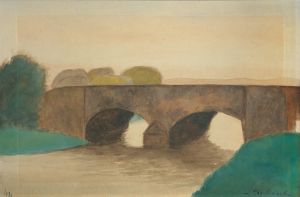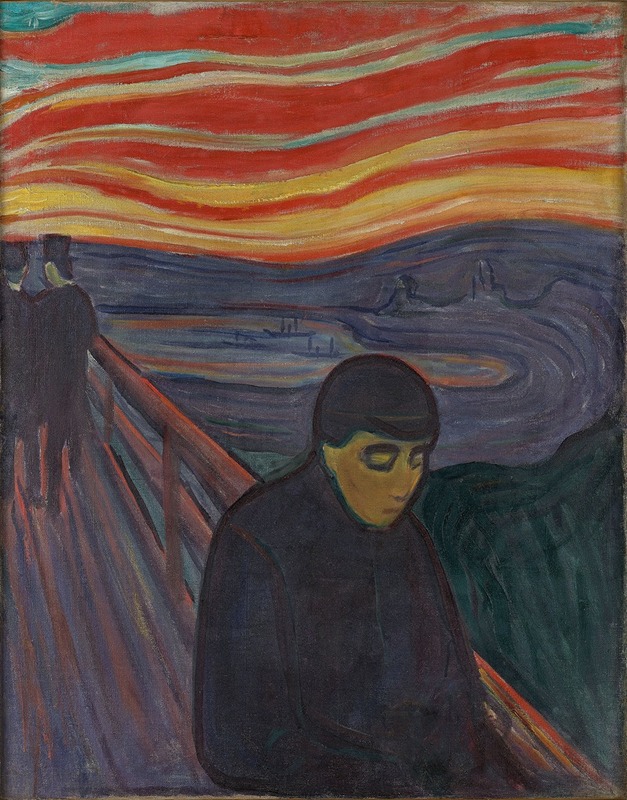
Despair
A hand-painted replica of Edvard Munch’s masterpiece Despair, meticulously crafted by professional artists to capture the true essence of the original. Each piece is created with museum-quality canvas and rare mineral pigments, carefully painted by experienced artists with delicate brushstrokes and rich, layered colors to perfectly recreate the texture of the original artwork. Unlike machine-printed reproductions, this hand-painted version brings the painting to life, infused with the artist’s emotions and skill in every stroke. Whether for personal collection or home decoration, it instantly elevates the artistic atmosphere of any space.
Edvard Munch's painting Despair is an oil on canvas work created in 1894. It is considered an important piece in Munch's artistic development and is closely related to his iconic painting The Scream. Despair is part of Munch's larger series known as the "Frieze of Life," which explores themes of love, anxiety, and death.
The composition of Despair features a figure standing on a bridge, gazing out over a fjord landscape. The scene is set against a dramatic, swirling sky rendered in vibrant reds, oranges, and yellows, which evoke a sense of emotional intensity. The figure on the bridge appears isolated and contemplative, embodying the existential themes that Munch often explored in his work. The setting of the bridge and the surrounding landscape is believed to have been inspired by the Kristiania (now Oslo) Fjord in Norway, a location that Munch frequently depicted in his art.
Despair is often viewed as a precursor to The Scream, as it shares similar compositional elements and emotional undertones. However, while The Scream captures a moment of overwhelming anxiety and existential terror, Despair conveys a quieter, more subdued sense of melancholy and introspection. The figure in Despair does not scream but instead stands silently, embodying a different facet of human emotion.
The painting reflects Munch's interest in Symbolism, a movement that sought to express emotional and psychological states through art. Munch's use of bold colors, simplified forms, and expressive brushwork in Despair exemplifies his innovative approach to capturing the inner workings of the human psyche. These stylistic choices would later influence the development of Expressionism, a movement in which Munch is considered a key precursor.
Today, Despair is recognized as a significant work within Munch's oeuvre, offering insight into his exploration of universal human emotions. The painting is held in the collection of the Munch Museum in Oslo, Norway, which houses many of the artist's most important works.





